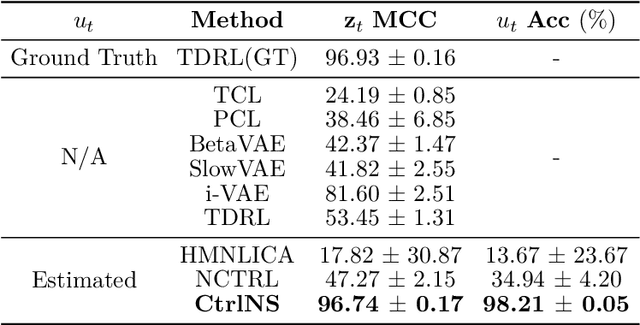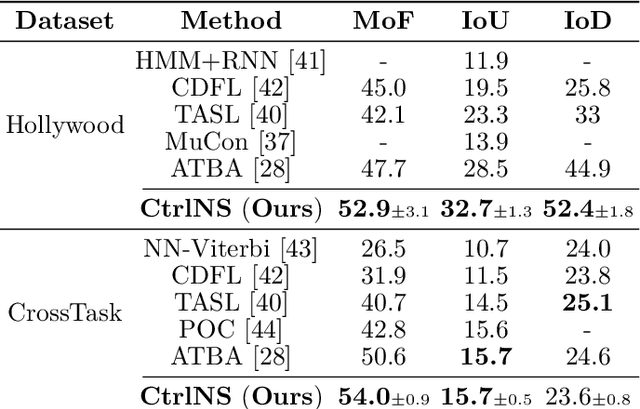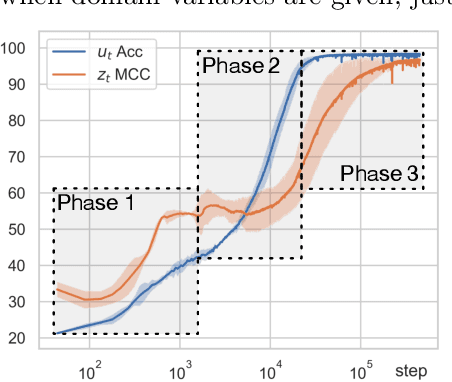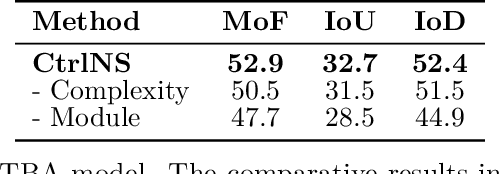Xinshuai Dong
Causal Discovery and Counterfactual Reasoning to Optimize Persuasive Dialogue Policies
Mar 19, 2025Abstract:Tailoring persuasive conversations to users leads to more effective persuasion. However, existing dialogue systems often struggle to adapt to dynamically evolving user states. This paper presents a novel method that leverages causal discovery and counterfactual reasoning for optimizing system persuasion capability and outcomes. We employ the Greedy Relaxation of the Sparsest Permutation (GRaSP) algorithm to identify causal relationships between user and system utterance strategies, treating user strategies as states and system strategies as actions. GRaSP identifies user strategies as causal factors influencing system responses, which inform Bidirectional Conditional Generative Adversarial Networks (BiCoGAN) in generating counterfactual utterances for the system. Subsequently, we use the Dueling Double Deep Q-Network (D3QN) model to utilize counterfactual data to determine the best policy for selecting system utterances. Our experiments with the PersuasionForGood dataset show measurable improvements in persuasion outcomes using our approach over baseline methods. The observed increase in cumulative rewards and Q-values highlights the effectiveness of causal discovery in enhancing counterfactual reasoning and optimizing reinforcement learning policies for online dialogue systems.
Type Information-Assisted Self-Supervised Knowledge Graph Denoising
Mar 13, 2025Abstract:Knowledge graphs serve as critical resources supporting intelligent systems, but they can be noisy due to imperfect automatic generation processes. Existing approaches to noise detection often rely on external facts, logical rule constraints, or structural embeddings. These methods are often challenged by imperfect entity alignment, flexible knowledge graph construction, and overfitting on structures. In this paper, we propose to exploit the consistency between entity and relation type information for noise detection, resulting a novel self-supervised knowledge graph denoising method that avoids those problems. We formalize type inconsistency noise as triples that deviate from the majority with respect to type-dependent reasoning along the topological structure. Specifically, we first extract a compact representation of a given knowledge graph via an encoder that models the type dependencies of triples. Then, the decoder reconstructs the original input knowledge graph based on the compact representation. It is worth noting that, our proposal has the potential to address the problems of knowledge graph compression and completion, although this is not our focus. For the specific task of noise detection, the discrepancy between the reconstruction results and the input knowledge graph provides an opportunity for denoising, which is facilitated by the type consistency embedded in our method. Experimental validation demonstrates the effectiveness of our approach in detecting potential noise in real-world data.
When Selection Meets Intervention: Additional Complexities in Causal Discovery
Mar 10, 2025Abstract:We address the common yet often-overlooked selection bias in interventional studies, where subjects are selectively enrolled into experiments. For instance, participants in a drug trial are usually patients of the relevant disease; A/B tests on mobile applications target existing users only, and gene perturbation studies typically focus on specific cell types, such as cancer cells. Ignoring this bias leads to incorrect causal discovery results. Even when recognized, the existing paradigm for interventional causal discovery still fails to address it. This is because subtle differences in when and where interventions happen can lead to significantly different statistical patterns. We capture this dynamic by introducing a graphical model that explicitly accounts for both the observed world (where interventions are applied) and the counterfactual world (where selection occurs while interventions have not been applied). We characterize the Markov property of the model, and propose a provably sound algorithm to identify causal relations as well as selection mechanisms up to the equivalence class, from data with soft interventions and unknown targets. Through synthetic and real-world experiments, we demonstrate that our algorithm effectively identifies true causal relations despite the presence of selection bias.
* Appears at ICLR 2025 (oral)
Permutation-Based Rank Test in the Presence of Discretization and Application in Causal Discovery with Mixed Data
Jan 31, 2025



Abstract:Recent advances have shown that statistical tests for the rank of cross-covariance matrices play an important role in causal discovery. These rank tests include partial correlation tests as special cases and provide further graphical information about latent variables. Existing rank tests typically assume that all the continuous variables can be perfectly measured, and yet, in practice many variables can only be measured after discretization. For example, in psychometric studies, the continuous level of certain personality dimensions of a person can only be measured after being discretized into order-preserving options such as disagree, neutral, and agree. Motivated by this, we propose Mixed data Permutation-based Rank Test (MPRT), which properly controls the statistical errors even when some or all variables are discretized. Theoretically, we establish the exchangeability and estimate the asymptotic null distribution by permutations; as a consequence, MPRT can effectively control the Type I error in the presence of discretization while previous methods cannot. Empirically, our method is validated by extensive experiments on synthetic data and real-world data to demonstrate its effectiveness as well as applicability in causal discovery.
Causal Temporal Representation Learning with Nonstationary Sparse Transition
Sep 05, 2024



Abstract:Causal Temporal Representation Learning (Ctrl) methods aim to identify the temporal causal dynamics of complex nonstationary temporal sequences. Despite the success of existing Ctrl methods, they require either directly observing the domain variables or assuming a Markov prior on them. Such requirements limit the application of these methods in real-world scenarios when we do not have such prior knowledge of the domain variables. To address this problem, this work adopts a sparse transition assumption, aligned with intuitive human understanding, and presents identifiability results from a theoretical perspective. In particular, we explore under what conditions on the significance of the variability of the transitions we can build a model to identify the distribution shifts. Based on the theoretical result, we introduce a novel framework, Causal Temporal Representation Learning with Nonstationary Sparse Transition (CtrlNS), designed to leverage the constraints on transition sparsity and conditional independence to reliably identify both distribution shifts and latent factors. Our experimental evaluations on synthetic and real-world datasets demonstrate significant improvements over existing baselines, highlighting the effectiveness of our approach.
On the Identifiability of Sparse ICA without Assuming Non-Gaussianity
Aug 19, 2024Abstract:Independent component analysis (ICA) is a fundamental statistical tool used to reveal hidden generative processes from observed data. However, traditional ICA approaches struggle with the rotational invariance inherent in Gaussian distributions, often necessitating the assumption of non-Gaussianity in the underlying sources. This may limit their applicability in broader contexts. To accommodate Gaussian sources, we develop an identifiability theory that relies on second-order statistics without imposing further preconditions on the distribution of sources, by introducing novel assumptions on the connective structure from sources to observed variables. Different from recent work that focuses on potentially restrictive connective structures, our proposed assumption of structural variability is both considerably less restrictive and provably necessary. Furthermore, we propose two estimation methods based on second-order statistics and sparsity constraint. Experimental results are provided to validate our identifiability theory and estimation methods.
On the Parameter Identifiability of Partially Observed Linear Causal Models
Jul 24, 2024



Abstract:Linear causal models are important tools for modeling causal dependencies and yet in practice, only a subset of the variables can be observed. In this paper, we examine the parameter identifiability of these models by investigating whether the edge coefficients can be recovered given the causal structure and partially observed data. Our setting is more general than that of prior research - we allow all variables, including both observed and latent ones, to be flexibly related, and we consider the coefficients of all edges, whereas most existing works focus only on the edges between observed variables. Theoretically, we identify three types of indeterminacy for the parameters in partially observed linear causal models. We then provide graphical conditions that are sufficient for all parameters to be identifiable and show that some of them are provably necessary. Methodologically, we propose a novel likelihood-based parameter estimation method that addresses the variance indeterminacy of latent variables in a specific way and can asymptotically recover the underlying parameters up to trivial indeterminacy. Empirical studies on both synthetic and real-world datasets validate our identifiability theory and the effectiveness of the proposed method in the finite-sample regime.
Meta-optimized Angular Margin Contrastive Framework for Video-Language Representation Learning
Jul 04, 2024Abstract:Data quality stands at the forefront of deciding the effectiveness of video-language representation learning. However, video-text pairs in previous data typically do not align perfectly with each other, which might lead to video-language representations that do not accurately reflect cross-modal semantics. Moreover, previous data also possess an uneven distribution of concepts, thereby hampering the downstream performance across unpopular subjects. To address these problems, we propose a contrastive objective with a subtractive angular margin to regularize cross-modal representations in their effort to reach perfect similarity. Furthermore, to adapt to the non-uniform concept distribution, we propose a multi-layer perceptron (MLP)-parameterized weighting function that maps loss values to sample weights which enable dynamic adjustment of the model's focus throughout the training. With the training guided by a small amount of unbiased meta-data and augmented by video-text data generated by large vision-language model, we improve video-language representations and achieve superior performances on commonly used video question answering and text-video retrieval datasets.
Modeling Dynamic Topics in Chain-Free Fashion by Evolution-Tracking Contrastive Learning and Unassociated Word Exclusion
May 28, 2024Abstract:Dynamic topic models track the evolution of topics in sequential documents, which have derived various applications like trend analysis and opinion mining. However, existing models suffer from repetitive topic and unassociated topic issues, failing to reveal the evolution and hindering further applications. To address these issues, we break the tradition of simply chaining topics in existing work and propose a novel neural \modelfullname. We introduce a new evolution-tracking contrastive learning method that builds the similarity relations among dynamic topics. This not only tracks topic evolution but also maintains topic diversity, mitigating the repetitive topic issue. To avoid unassociated topics, we further present an unassociated word exclusion method that consistently excludes unassociated words from discovered topics. Extensive experiments demonstrate our model significantly outperforms state-of-the-art baselines, tracking topic evolution with high-quality topics, showing better performance on downstream tasks, and remaining robust to the hyperparameter for evolution intensities. Our code is available at https://github.com/bobxwu/CFDTM .
Counterfactual Reasoning Using Predicted Latent Personality Dimensions for Optimizing Persuasion Outcome
Apr 21, 2024Abstract:Customizing persuasive conversations related to the outcome of interest for specific users achieves better persuasion results. However, existing persuasive conversation systems rely on persuasive strategies and encounter challenges in dynamically adjusting dialogues to suit the evolving states of individual users during interactions. This limitation restricts the system's ability to deliver flexible or dynamic conversations and achieve suboptimal persuasion outcomes. In this paper, we present a novel approach that tracks a user's latent personality dimensions (LPDs) during ongoing persuasion conversation and generates tailored counterfactual utterances based on these LPDs to optimize the overall persuasion outcome. In particular, our proposed method leverages a Bi-directional Generative Adversarial Network (BiCoGAN) in tandem with a Dialogue-based Personality Prediction Regression (DPPR) model to generate counterfactual data. This enables the system to formulate alternative persuasive utterances that are more suited to the user. Subsequently, we utilize the D3QN model to learn policies for optimized selection of system utterances on counterfactual data. Experimental results we obtained from using the PersuasionForGood dataset demonstrate the superiority of our approach over the existing method, BiCoGAN. The cumulative rewards and Q-values produced by our method surpass ground truth benchmarks, showcasing the efficacy of employing counterfactual reasoning and LPDs to optimize reinforcement learning policy in online interactions.
 Add to Chrome
Add to Chrome Add to Firefox
Add to Firefox Add to Edge
Add to Edge